通信原理(英文版)8[40页]
- 格式:ppt
- 大小:1.61 MB
- 文档页数:40

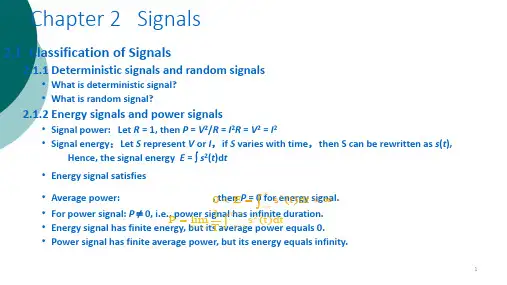

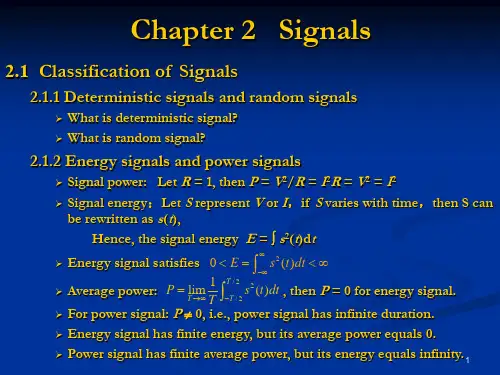
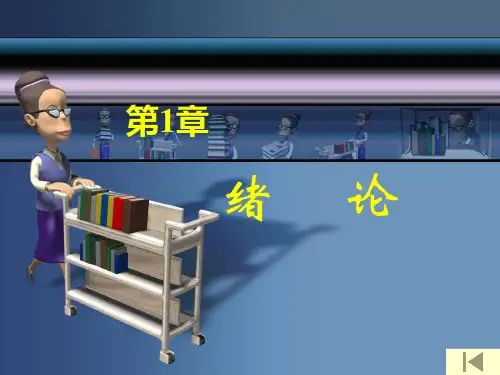
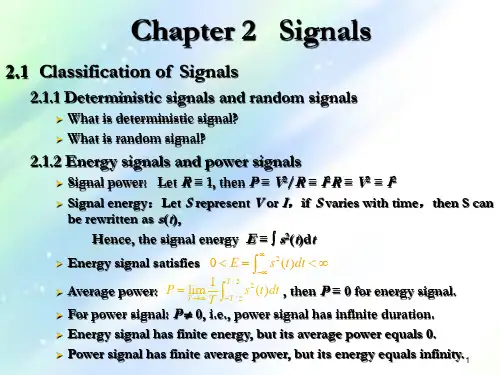
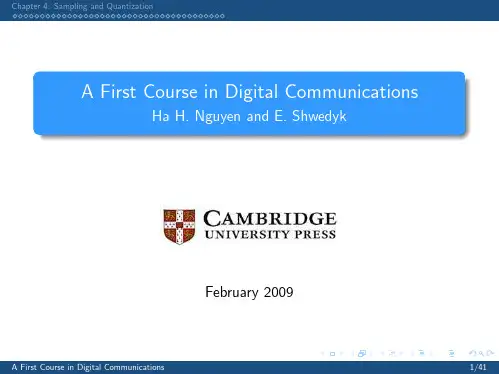
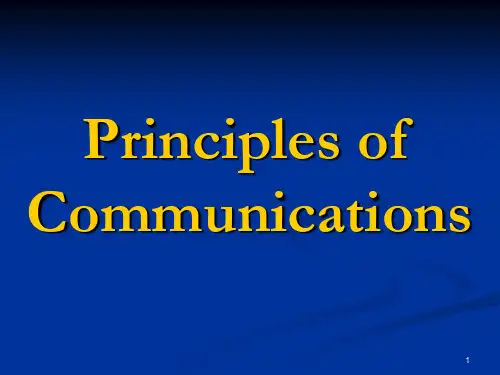
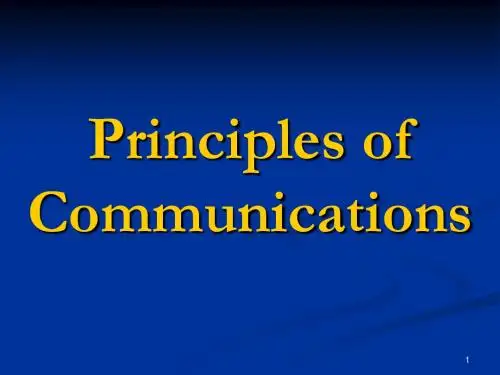

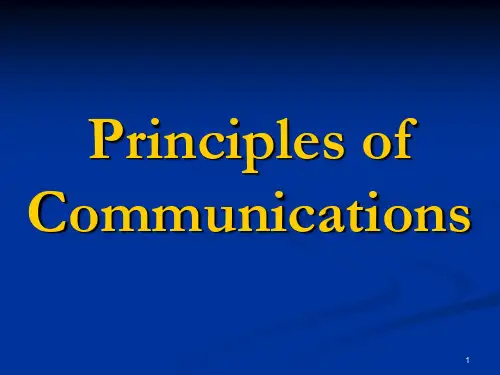
Communication Principles - English Version Teaching Design IntroductionCommunication principles are an essential part of any telecommunication system. This English version teaching design focuses on providing students with a solid conceptual framework for understanding the fundamental principles of communication. The program’s learning objectives include developing the student’s ability to:•Familiarize with the communication system architecture•Understand basic communication signals and signal processing techniques•Analyze the key features of various modulation techniques•Develop a deep understanding of the operational principle of encryption techniquesCourse OutlineThe course consists of fifteen topics with a total of 45 hours of instruction time. Below is a detled overview of the topics covered in the class.Topic 1: Overview of Communication System Architecture •Introduction to communication•Essential elements of communication systems•Communication system architecture•Overview of communication system componentsTopic 2: Signals and Signal Processing Techniques •Introduction to signals and signal processing techniques•Analog Signals and Digital Signals•Fourier Series and Fourier Transform•Sampling and Quantization•Modulation and DemodulationTopic 3: Amplitude Modulation (AM)•Introduction to Amplitude Modulation (AM)•Time-domn description•Frequency-domn description•Modulation index•Double sideband, full carrier (DSB-FC) and double sideband, suppressed carrier (DSB-SC) AMTopic 4: Angle Modulation•Introduction to Angle Modulation•Types of Angle Modulation•Phase Modulation (PM)•Frequency Modulation (FM)•Comparison between FM and AMTopic 5: Pulse Modulation Techniques•Introduction to Pulse Modulation Techniques•Types of Pulse Modulation Techniques•Pulse Amplitude Modulation (PAM)•Pulse Width Modulation (PWM)•Pulse Position Modulation (PPM)Topic 6: Spread Spectrum Techniques•Introduction to Spread Spectrum techniques•Types of Spread Spectrum Techniques•Direct Sequence Spread Spectrum (DSSS)•Frequency Hopping Spread Spectrum (FHSS) Topic 7: Digital Modulation Techniques•Introduction to Digital Modulation Techniques •Types of Digital Modulation Techniques•Amplitude Shift Keying (ASK)•Frequency Shift Keying (FSK)•Phase Shift Keying (PSK)•Quadrature Amplitude Modulation (QAM)Topic 8: Error Detection and Correction Methods •Introduction to Error Detection and Correction Methods•Types of Error Detection and Correction Methods •Block and Convolutional Codes•Cyclic Codes and Hamming Codes•Forward Error Correction (FEC)Topic 9: Encryption Techniques•Introduction to Encryption Techniques•Types of Encryption Techniques•Symmetric Encryption•Asymmetric Encryption•Digital Signature and Public Key Infrastructure (PKI)Topic 10: Communication Channel•Introduction to the Communication Channel•Types of Communication Channels•Analog and Digital Communication Channels•Noise Introduction and Characteristics of Noise •Channel CapacityTopic 11: Multiple Access Techniques•Introduction to Multiple Access Techniques•Types of Multiple Access Techniques•Frequency Division Multiple Access (FDMA)•Time Division Multiple Access (TDMA)•Code Division Multiple Access (CDMA)Topic 12: Data Transmission•Introduction to Data Transmission•Data Transmission Modes•Synchronous and Asynchronous Transmission•Error Control and Flow Control Techniques Topic 13: Analog to Digital Conversion and Digital to Analog Conversion•Introduction to Analog to Digital Conversion and Digital to Analog Conversion•Types of Analog-Digital Conversion Techniques•Sampling and Quantization Error•Reconstruction Filter•Digital-to-Analog Conversion Techniques Topic 14: Introduction to Wireless Communication•Introduction to Wireless Communication•Basic of Wireless Communication system•Cellular system architecture•Wireless Modulation SchemeTopic 15: Advanced Topics•Introduction to Advanced Topics in Communications•Optical Communication•Satellite Communication•Ad-Hoc Networking•Next-generation NetworksTeaching StrategiesThe teaching style of this course emphasizes practical problem-solving exercises and interactive group activities. The following teaching strategies are employed in the course: •Classroom lectures•Interactive class discussions•Group activities•Audio-visual presentations•Case studies and problem-solving exercises•Guest lecturesConclusionThe Communication Principles English version teaching design provides a comprehensive approach to learning the fundamental principles of communication. Students will gn insight into the communication system architecture, essential signal processing techniques and various digital modulation schemes. The course prepares learners’ to understand the intricacies of designing communication systems and prepares them for future studies in the field of electronic communication.。
Principles of Communications通信原理1、communication system mode l通信系统模型信源发送设备信道接收设备信宿Source T ransmitter channel receiver sink噪声源noise sourceThe function of T ransmitter is to generate a signal suitable for transmission over a channel.A channel is a physical medium used to transmit signals from T ransmitter to receiver.like wires,fiber-optical cable,space.The function of receiver is to amplify and invert the signal and restore the original electrical signal.发送设备的作用是产生合适于在信道中传输的信号。
信道是一种物理媒质,用来将来自发送设备的信号传送到接收端。
如电线、光纤电缆、空间。
接收设备的功能是将信号放大和反变换,恢复出原始的电信号。
2、Analog communication system:it is a communication system that uses analog signals to transmit information;Digital communication system:it is the use of digital signals to transmit information communication system;The technical problems involved in digital communication mainly include source coding and decoding,channel coding and decoding,digital modulation and demodulation,etc.模拟通信系统:它是利用模拟信号来传递信息的通信系统;数字通信系统:它是利用数字信号来传递信息的通信系统;数字通信涉及的技术问题主要有信源编码与译码、信道编码与译码、数字调制与解调等。